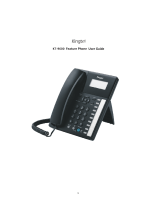
Feature Guide 11
LCOT/BRI Trunk Name [401]............................................................................................................. 340
LCOT/BRI Trunk Group Number [402]............................................................................................... 340
LCOT/BRI Trunk Number Reference [409] ........................................................................................ 341
LCOT Dialling Mode [410].................................................................................................................. 341
LCOT Pulse Rate [411]...................................................................................................................... 341
LCOT DTMF Minimum Duration [412] ............................................................................................... 341
LCOT CPC Signal Detection Time—Outgoing [413] .........................................................................341
LCOT CPC Signal Detection Time—Incoming [414] .........................................................................341
LCOT Reverse Circuit [415]............................................................................................................... 341
LCOT Pause Time [416] .................................................................................................................... 342
LCOT Flash/Recall Time [417]........................................................................................................... 342
LCOT Disconnect Time [418]............................................................................................................. 342
BRI Network Type [420]..................................................................................................................... 342
BRI DIL/DDI/MSN Selection [421]..................................................................................................... 342
BRI Subscriber Number [422]............................................................................................................ 342
BRI Layer 1 Active Mode [424] .......................................................................................................... 342
BRI Layer 2 Active Mode [425] .......................................................................................................... 343
BRI Configuration [426]...................................................................................................................... 343
BRI TEI Mode [427] ...........................................................................................................................343
DIL 1:1 Destination [450]................................................................................................................... 343
DID Number [451].............................................................................................................................. 343
DID Name [452]................................................................................................................................. 344
DID Destination [453].........................................................................................................................344
Trunk Group Intercept Destination [470]............................................................................................ 344
Host PBX Access Code [471]............................................................................................................ 344
Extension-to-Trunk Call Duration [472].............................................................................................. 344
Trunk-to-Trunk Call Duration [473]..................................................................................................... 344
DISA Silence Detection [475]............................................................................................................. 345
DISA Continuous Signal Detection [476]...........................................................................................345
DISA Cyclic Signal Detection [477].................................................................................................... 345
Caller ID Signal Type [490] (KX-TDA30/KX-TDA100/KX-TDA200 only)............................................345
Pay Tone Signal Type [491] (KX-TDA100/KX-TDA200 only).............................................................. 345
3.3.7 COS Programming................................................................................................346
Trunk Group Number [500] ................................................................................................................ 346
TRS/Barring Level [501]..................................................................................................................... 346
Trunk Call Duration Limitation [502]................................................................................................... 346
Call Transfer to Trunk [503]................................................................................................................ 346
Call Forwarding to Trunk [504]........................................................................................................... 346
Executive Busy Override [505]...........................................................................................................347
Executive Busy Override Deny [506] ................................................................................................. 347
DND Override [507] ...........................................................................................................................347
Account Code Mode [508] .................................................................................................................347
TRS/Barring Level for System Speed Dialling [509] .......................................................................... 347
TRS/Barring Level for Extension Lock [510]...................................................................................... 347
Manager Assignment [511]................................................................................................................ 347
Permission for Door Open Access [512]............................................................................................348
Time Service Manual Switching [514]................................................................................................348
Wireless XDP Parallel Mode for Paired Telephone [515]................................................................... 348
Programming Mode Limitation [516].................................................................................................. 348
3.3.8 Extension Programming........................................................................................349
EXtra Device Port (XDP) Mode [600].................................................................................................349
Terminal Device Assignment [601].....................................................................................................349
Class of Service [602]........................................................................................................................ 349
User Group [603] ............................................................................................................................... 349
Extension Intercept Destination [604]................................................................................................ 349
Call Forwarding—No Answer Time [605]........................................................................................... 349
CLIP/COLP Number [606].................................................................................................................350
Incoming Call Distribution Group Member [620]................................................................................ 350
Incoming Call Distribution Group Delayed Ringing [621]................................................................... 350




















